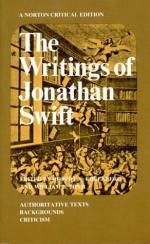[Footnote 12: They had become scarce because they had been undervalued, and therefore sent out of the country in payment of goods bought. See Prior’s “Observations on Coin,” issued in 1729, where it is stated that this scarcity had occurred only within the last twenty years. [T.S.]]
[Footnote 13: William Wood (1671-1730) was an ironmaster of Wolverhampton. In addition to the patent for coining copper halfpence which he obtained for Ireland, and to which full reference is made in the introductory note to this first Drapier’s Letter, Wood also obtained a patent, in 1722, for coining halfpence, pence and twopence for the English colonies in America. This latter patent fared no better than the Irish one. The coins introduced in America bear the dates 1722 and 1723, and are now much sought after by collectors. They are known as the Rosa American coinage. A list of the poems and pamphlets on Wood, during the excitement in Dublin, attending on the Drapier’s Letters, will be found in the bibliography of Swift’s works to be given in vol. xi. of this edition. See also Monck Mason’s “History of St. Patrick’s Cathedral.” In the original edition of the Letter, Wood’s name is mis-spelt Woods. [T. S.]]
[Footnote 14: See the introductory note for the manner in which this patent was obtained. [T.S.]]
[Footnote 15: This is how the amount is named in the first edition; but the amount in reality was L100,800 (the value of 360 tons of copper, as stated by the patent). Sir W. Scott prints this as L108,000. Coxe, in his “Memoirs of Sir Robert Walpole” gives the amount as L100,000. Lecky states it as L108,000. [T.S.]]
Perhaps you will wonder how such an ordinary fellow as this Mr. Wood could have so much interest as to get His Majesty’s broad seal for so great a sum of bad money, to be sent to this poor country, and that all the nobility and gentry here could not obtain the same favour, and let us make our own halfpence, as we used to do. Now I will make that matter very plain. We are at a great distance from the King’s court, and have nobody there to solicit for us, although a great number of lords and squires, whose estates are here, and are our countrymen, spending all their lives and fortunes there. But this same Mr. Wood was able to attend constantly for his




